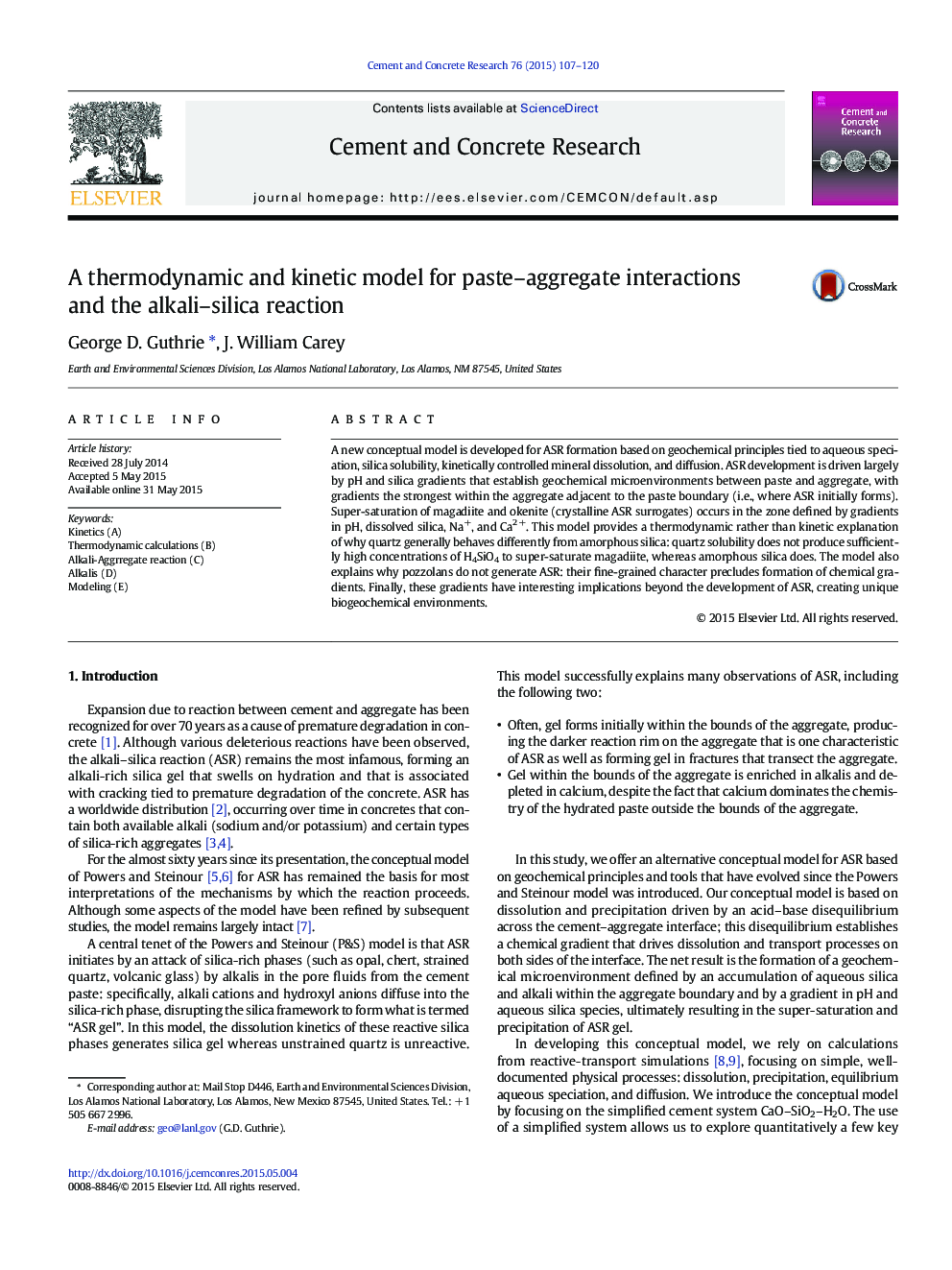| Article ID | Journal | Published Year | Pages | File Type |
|---|---|---|---|---|
| 7885337 | Cement and Concrete Research | 2015 | 14 Pages |
Abstract
A new conceptual model is developed for ASR formation based on geochemical principles tied to aqueous speciation, silica solubility, kinetically controlled mineral dissolution, and diffusion. ASR development is driven largely by pH and silica gradients that establish geochemical microenvironments between paste and aggregate, with gradients the strongest within the aggregate adjacent to the paste boundary (i.e., where ASR initially forms). Super-saturation of magadiite and okenite (crystalline ASR surrogates) occurs in the zone defined by gradients in pH, dissolved silica, Na+, and Ca2Â +. This model provides a thermodynamic rather than kinetic explanation of why quartz generally behaves differently from amorphous silica: quartz solubility does not produce sufficiently high concentrations of H4SiO4 to super-saturate magadiite, whereas amorphous silica does. The model also explains why pozzolans do not generate ASR: their fine-grained character precludes formation of chemical gradients. Finally, these gradients have interesting implications beyond the development of ASR, creating unique biogeochemical environments.
Related Topics
Physical Sciences and Engineering
Engineering
Industrial and Manufacturing Engineering
Authors
George D. Guthrie, J. William Carey,
